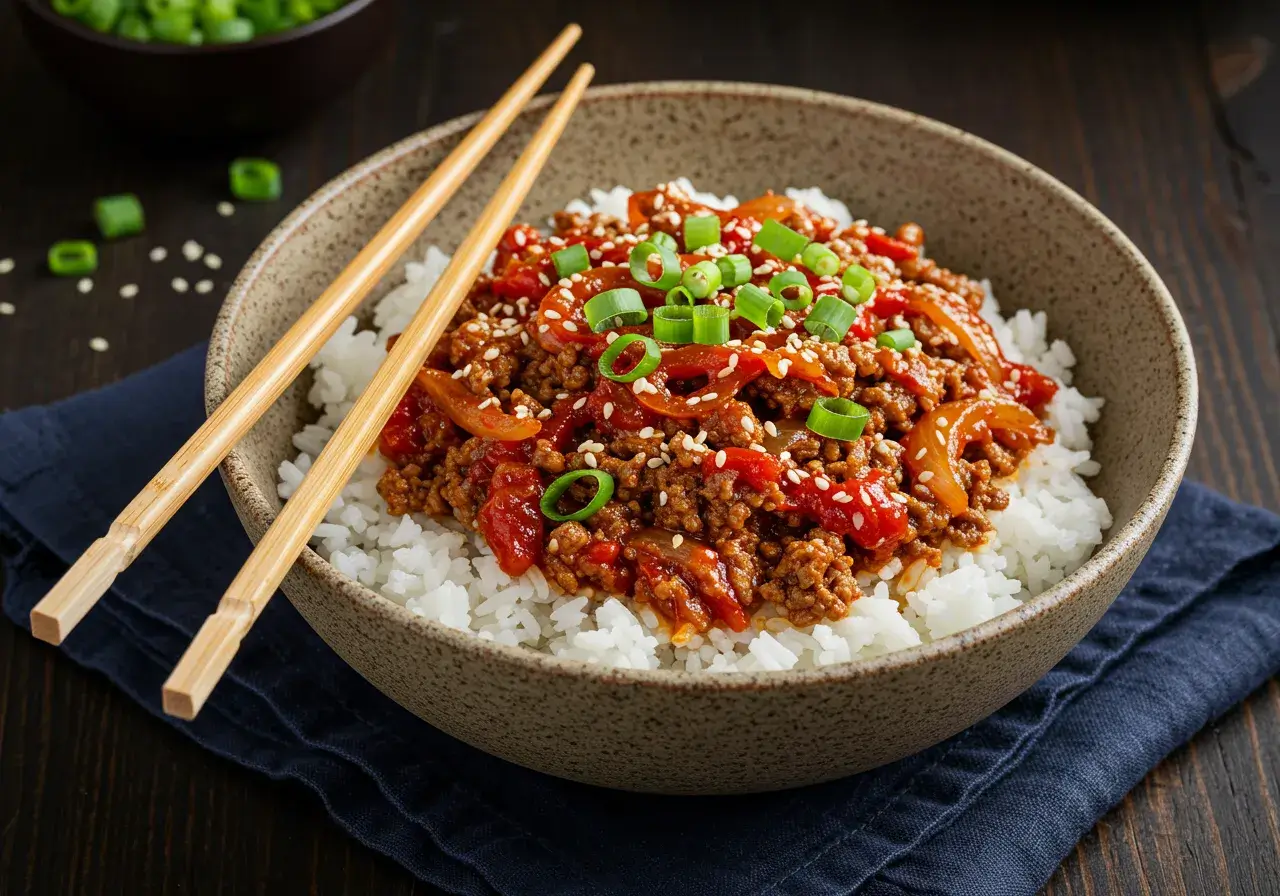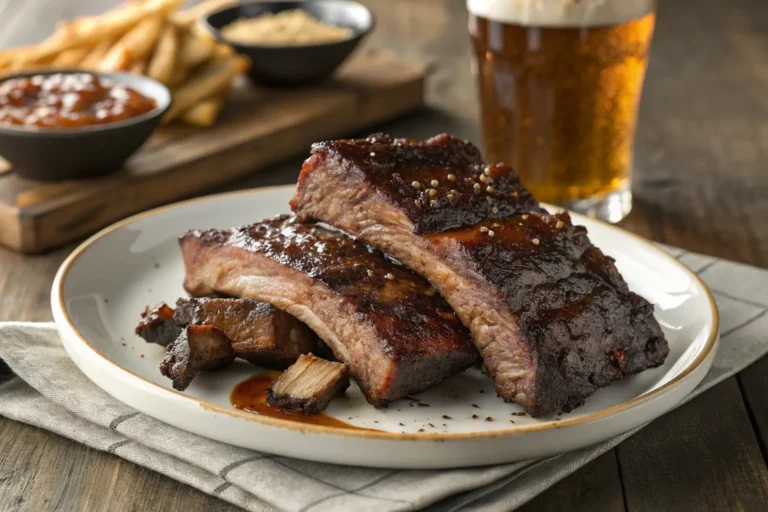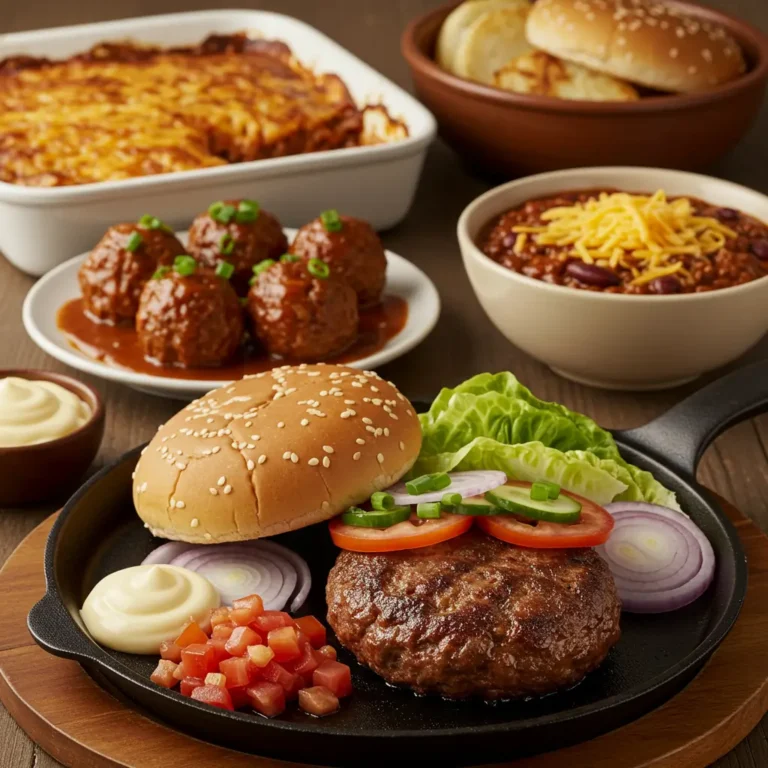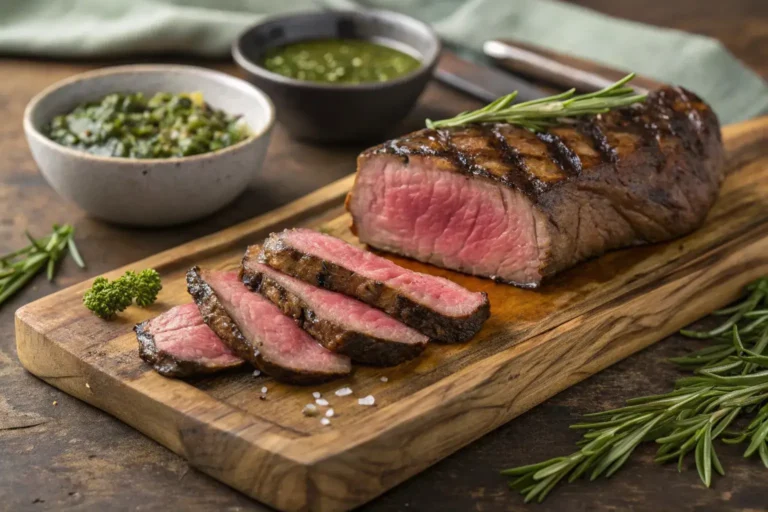Easy Korean Ground Beef with Gochujang: A 20-Minute Flavor Explosion
My first taste of Korean ground beef was at a dinner party in San Francisco. A friend’s Korean-American grandmother shared her secret recipe. It turned simple ground beef into a flavor explosion. The magic ingredient? Gochujang.
Korean beef recipes grab your taste buds with bold flavors. This dish is more than a quick meal. It’s a journey through Korean cuisine’s rich traditions. The mix of savory beef, sweet-spicy gochujang, and spices is both comforting and exciting.
Table of Contents
What Makes Korean Ground Beef with Gochujang Special
Korean cuisine is full of vibrant flavors. Spicy Korean beef is a true culinary gem. The magic is in its depth and complexity, thanks to gochujang sauce. This fermented chili paste turns ordinary ground beef into an extraordinary meal.
Gochujang sauce is more than a condiment. It’s a cultural cornerstone of Korean cooking. It brings multiple flavor dimensions to every bite. The unique characteristics that make this sauce special include:
- Rich, deep red color from fermented red peppers
- Complex umami flavor profile
- Perfect balance of heat and sweetness
- Centuries-old traditional preparation methods
The Cultural Significance of Gochujang in Korean Cuisine
In traditional Korean kitchens, gochujang sauce is more than an ingredient. It’s a culinary art form passed through generations. It embodies the soul of Korean cooking. This fermented chili paste connects families through shared meals and time-honored recipes.
Understanding the Perfect Balance of Sweet, Spicy, and Savory
The brilliance of spicy Korean beef is in its harmonious flavor blend. Gochujang sauce creates a remarkable taste experience. It balances sweet, spicy, and savory notes. Each bite offers a symphony of flavors that dance across your palate, making this dish an unforgettable culinary journey.
Essential Ingredients for Korean Ground Beef Gochujang
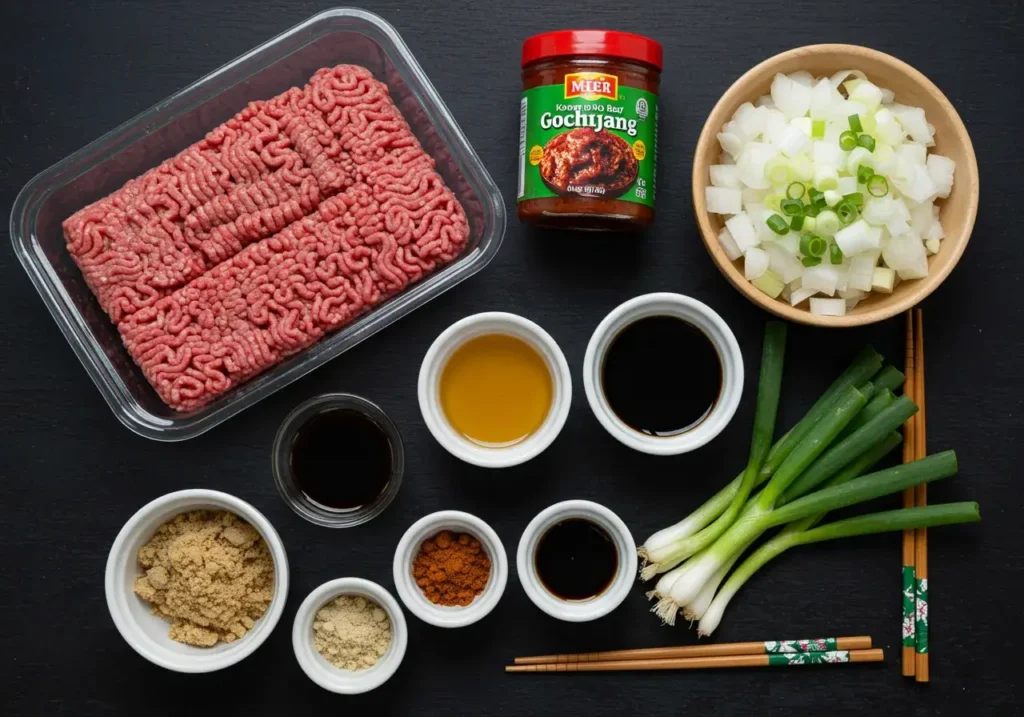
Making authentic Korean beef recipes needs the right ingredients. These ingredients bring out the deep, complex flavors of Korean food. The gochujang marinade is key, turning simple ground beef into a dish to remember.
Here’s what you need for the best Korean ground beef:
- Ground Beef: Choose 80/20 lean-to-fat ratio for maximum flavor
- Gochujang Paste: The essential spicy fermented chili condiment
- Soy sauce
- Sesame oil
- Minced garlic
- Brown sugar
- Green onions
My secret to a great gochujang marinade is mixing heat with sweet and umami. The spicy gochujang and sweet brown sugar add a depth that makes the ground beef special.
Choose fresh, high-quality ingredients for the best results. Asian grocery stores have the real gochujang and sesame oil. These can really make your Korean beef stand out.
- Pro tip: Always taste your marinade before adding it to the meat
- Adjust seasoning to match your personal spice preference
Knowing each ingredient’s role helps you make a memorable Korean ground beef dish. It captures the true spirit of Korean cooking.
Kitchen Tools and Equipment You’ll Need
To make a tasty korean beef stir fry, you need the right tools. Whether you’re cooking at home or love to try new recipes, the right equipment makes a big difference. It turns your korean bbq beef dish from good to great.
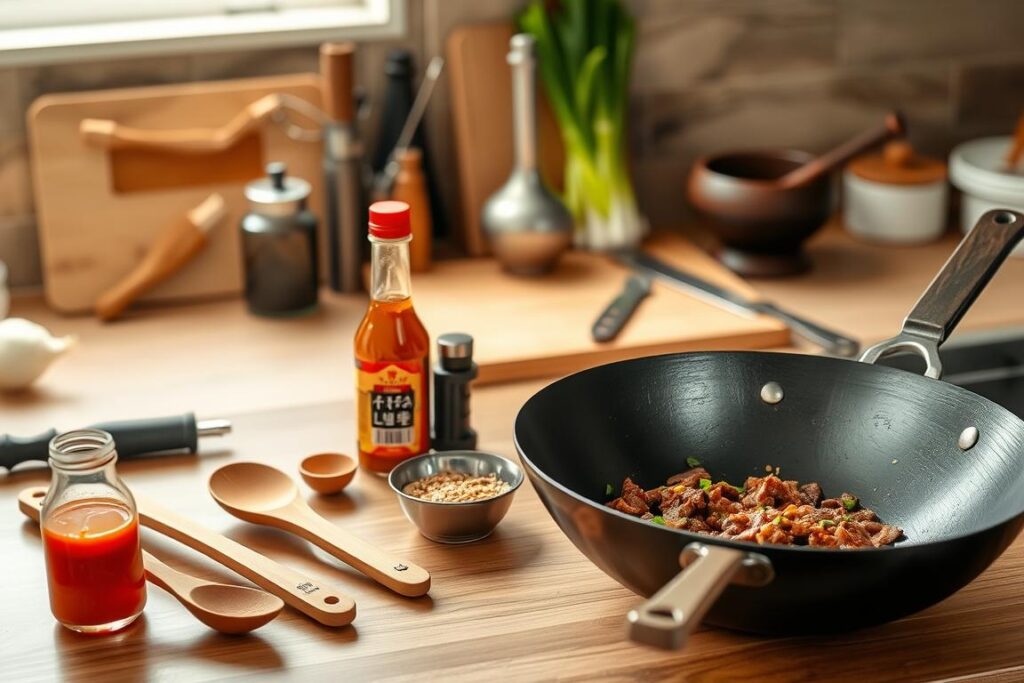
You don’t need a full professional kitchen to cook Korean dishes. Even with basic tools and a few special ones, you can make amazing meals.
Traditional Cooking Equipment
Korean cooking uses special tools that add flavor and technique:
- Dolsot (stone bowl) for serving hot dishes
- Traditional cast-iron wok for korean beef stir fry
- Wooden rice paddle for stirring and serving
- Ceramic kimchi pots for fermentation
Time-Saving Kitchen Tools
Modern tools can make cooking korean bbq beef easier:
- Non-stick wok with heat-resistant handle
- Electric rice cooker
- Sharp chef’s knife for precise cutting
- Instant-read digital meat thermometer
Getting these tools will make cooking Korean food more fun and quick. Remember, the key to great cooking is passion and skill, not just fancy tools.
Step-by-Step Cooking Instructions for Korean Beef Stir Fry
Making a tasty korean beef stir fry is simple. I’ll guide you through making a real korean ground beef gochujang dish. It’s sure to wow your family and friends.
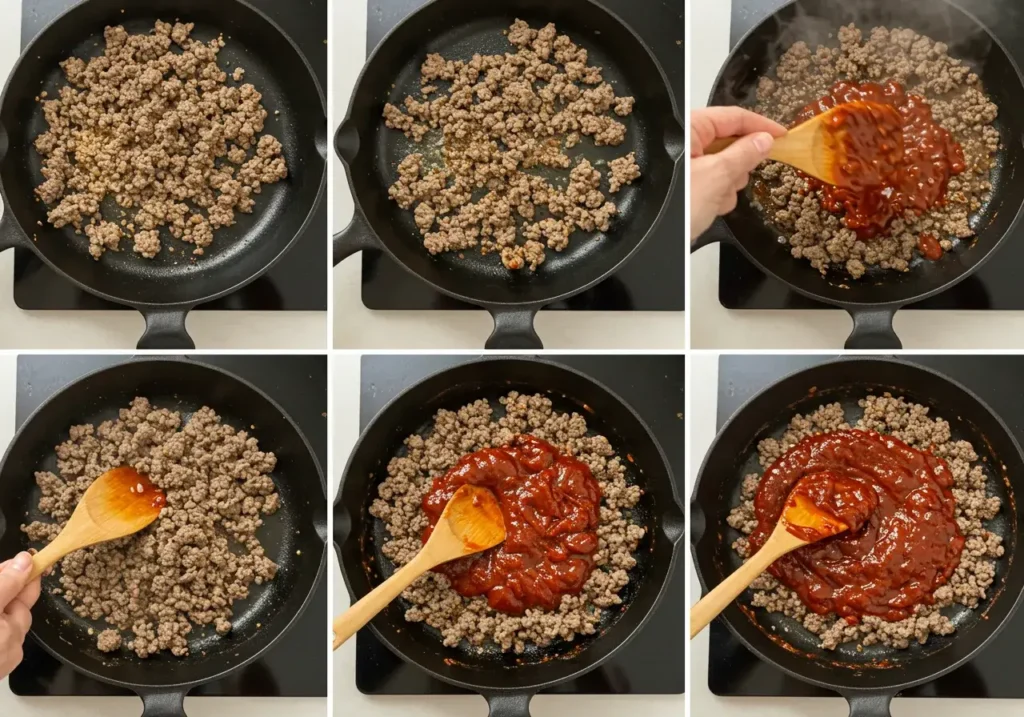
First, get your ingredients ready. You’ll need:
- Ground beef
- Gochujang sauce
- Garlic
- Green onions
- Sesame oil
For a great korean beef stir fry, use high heat and quick cooking. A cast-iron skillet or wok works best. Heat your pan until it’s very hot, then add a bit of sesame oil.
- Brown the ground beef over high heat
- Drain excess fat if needed
- Add minced garlic
- Stir in gochujang sauce
- Cook for 2-3 minutes until meat is fully coated
My secret for authentic flavor is to let the meat caramelize a bit. This makes the stir fry unforgettable. Finish with chopped green onions and sesame seeds.
Pro tip: Don’t overcrowd the pan! Cook in batches if necessary to ensure each piece of beef gets perfectly crispy.
Creating the Perfect Gochujang Marinade
Making a great gochujang marinade is key to turning regular ground beef into a tasty Korean bulgogi dish. My recipe mixes old flavors with new cooking ways for a meal you’ll remember.
For a top-notch gochujang marinade, it’s all about the balance of flavors. I’ll show you how to make a marinade that highlights your Korean ground beef’s taste.
Balancing Spice Levels
Getting the spice right in your gochujang marinade is all about picking the right ingredients. Here’s how to adjust the heat:
- Begin with mild gochujang paste
- Add honey or brown sugar to soften the heat
- Use less paste for a milder taste
- Add more chili flakes for more heat
Marination Time and Techniques
The trick to flavorful Korean bulgogi is in the marination. I suggest marinating the ground beef for:
- At least: 30 minutes
- Best: 2-4 hours
- Longest: Overnight (8-12 hours)
Storing Extra Marinade
To get the most out of your gochujang marinade, keep any extra in an airtight container in the fridge. It lasts up to a week, making quick, tasty meals easy all week long.
Serving Suggestions and Rice Pairing Tips
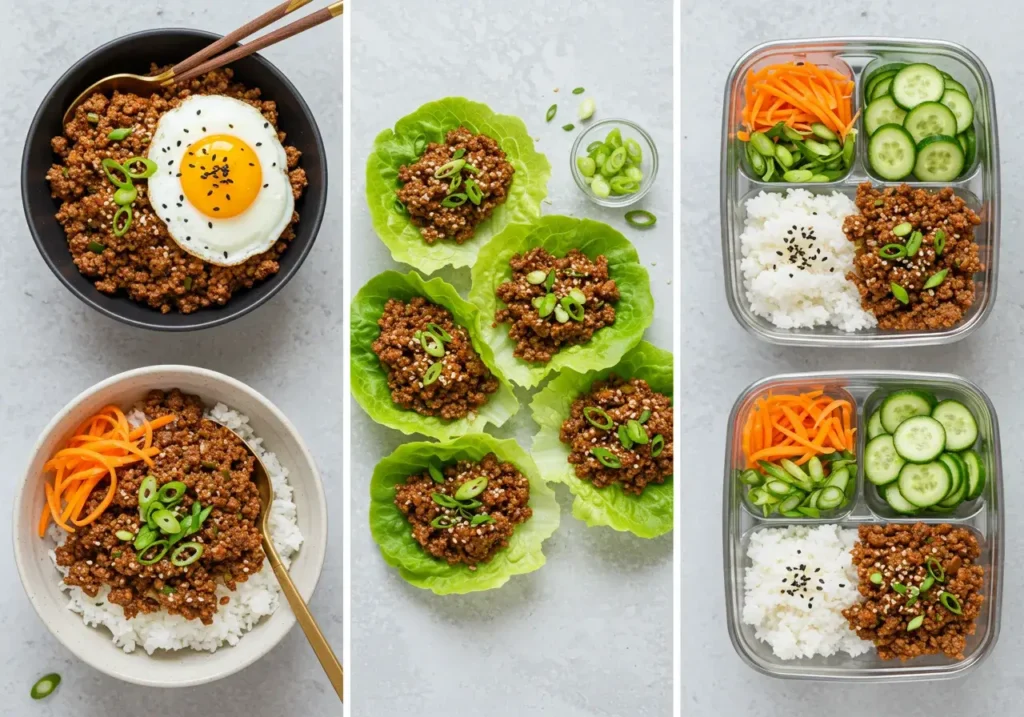
Creating the perfect beef gochujang bowls is more than just cooking. I’ve found great ways to make your meal look and taste amazing. These tips will impress your guests and make your meal satisfying.
When making korean beef and rice, keep these tips in mind:
- Choose the right rice base: Short-grain white rice is best for authentic flavor
- Garnish with fresh herbs like cilantro or green onions
- Add a sprinkle of toasted sesame seeds for extra texture
- Include pickled vegetables as a side complement
My favorite beef gochujang bowls have a mix of colors and textures. Here’s how to layer your dish:
- Steamed rice as the foundation
- Spicy gochujang-seasoned ground beef
- Crisp, julienned vegetables
- A soft-cooked egg on top
For more delicious beef recipes that will wow your family, check out our complete collection of beef recipes that pair perfectly with these Korean flavors.
How to Store and Reheat Korean Ground Beef
After making tasty korean beef recipes, it’s key to know how to store and reheat them. This keeps the flavor and texture just right. Storing leftover Korean ground beef needs careful steps to keep it tasty and safe.
Proper Refrigeration Techniques
Here’s how to store your Korean ground beef:
- Cool the beef completely before storing
- Use airtight containers to prevent moisture loss
- Refrigerate within two hours of cooking
- Store in the refrigerator for up to 3-4 days
Freezing for Long-Term Storage
Freezing is great for keeping your korean beef recipes fresh longer. Here’s how to freeze your spicy korean beef:
- Divide beef into portion-sized containers
- Remove as much air as possible from storage containers
- Label with the date of preparation
- Freeze for up to 3 months
Reheating Without Losing Flavor
Reheating Korean ground beef needs gentle care to keep its taste and texture. Use a skillet or microwave with a few tips to keep it moist and tasty.
- Add a small splash of water when reheating to prevent dryness
- Use medium heat to warm slowly
- Stir occasionally to distribute heat evenly
- Avoid overheating to prevent toughening the meat
By following these tips, your Korean ground beef will stay delicious, just like when it was first made.
Common Mistakes to Avoid When Making Korean BBQ Beef
Making authentic korean bbq beef at home can be challenging. I’ve found several common mistakes that can ruin your korean bulgogi recipe. These mistakes can stop you from getting that perfect restaurant-quality flavor.
Here are the most critical mistakes to watch out for when cooking korean bbq beef:
- Overcooking the meat: Ground beef can quickly become tough and dry. Cook it just until it’s browned to maintain tenderness
- Using low-quality gochujang that lacks depth of flavor
- Skipping the marination process, which is key for rich taste
- Not draining excess fat from the ground beef
Temperature control is another key aspect of making delicious korean bulgogi. Many home cooks make the mistake of cooking at too high a heat. This can cause the meat to become chewy and lose its delicate texture.
My top recommendation is to practice patience. Take time to understand the nuances of korean bbq beef preparation. Taste as you go, adjust seasonings, and don’t be afraid to experiment with different techniques.
- Use a cast-iron skillet for even heat distribution
- Allow meat to rest after cooking
- Choose fresh, high-quality ingredients
By avoiding these common mistakes, you’ll be well on your way to creating an authentic and delicious korean bbq beef dish. This dish will impress your family and friends.
Variations on Korean Ground Beef with Gochujang
Exploring korean beef recipes has led to exciting twists on the classic beef gochujang bowls. This dish’s versatility makes it perfect for different tastes and dietary needs.
Looking for protein alternatives? Try these tasty options:
- Ground turkey for a leaner choice
- Plant-based ground meat for vegetarian bowls
- Diced chicken for a lighter protein
Adding vegetables can take your korean beef recipes to the next level. Consider these:
- Roasted bell peppers
- Sautéed mushrooms
- Crispy zucchini ribbons
- Pickled daikon radish
Changing how you cook can also make a big difference. I’ve tried:
- Slow cooker preparation
- Sheet pan roasting
- Air fryer technique
- Instant Pot quick cooking
These changes keep beef gochujang bowls fresh and exciting. They let home cooks make their meals unique and fun.
Health Benefits of Korean Ground Beef with Gochujang
Spicy korean beef with gochujang sauce is not only tasty but also full of health benefits. It combines lean ground beef with fermented gochujang. This mix is a powerhouse of nutrients that can improve your health.
The main health perks of this dish are:
- Protein-rich ground beef supports muscle development and repair
- Gochujang sauce provides probiotics that enhance gut health
- Low-calorie option for weight-conscious individuals
- Rich in essential vitamins and minerals
Gochujang sauce has amazing health benefits beyond its flavor. Its fermented red pepper base has capsaicin. This may boost metabolism and reduce inflammation. Ground beef adds high-quality protein and important nutrients like iron, zinc, and vitamin B12.
Nutritionists suggest adding lean proteins like this spicy korean beef to a healthy diet. It has protein, complex carbs, and just the right amount of spice. This makes it a great choice for those who want taste and nutrition.
Knowing the health benefits, you can enjoy this delicious meal. You’ll be nourishing your body with every bite of gochujang sauce-infused ground beef.
Conclusion
Exploring Korean ground beef gochujang has been a thrilling journey. It combines flavors and culture in a unique way. This recipe turns simple ingredients into a dish that’s both traditional and modern.
The mix of sweet, spicy, and savory flavors makes it hard to resist. It’s perfect for those who love bold tastes. Korean beef and rice is a meal that will excite your taste buds.
Learning to make this dish opens up new culinary possibilities. You’ll learn about gochujang’s complex flavors and how to stir-fry perfectly. These skills will help you in many recipes, not just this one.
Each time you cook it, you’ll find new flavors and grow more confident. It’s a recipe that keeps getting better with practice.
I suggest trying out this recipe and adding your own twist. It’s great for both experienced cooks and beginners. Your kitchen will become a doorway to Korean cuisine, one delicious bite at a time.
Remember, cooking is about joy, connection, and learning. Enjoy your culinary journey!
FAQ
What is gochujang, and why is it important in Korean cooking?
Gochujang is a Korean red chili paste. It’s made from red chili powder, rice, soybeans, and salt. It adds spicy, sweet, and umami flavors to dishes like Korean ground beef.
How spicy is Korean ground beef with gochujang?
You can adjust the spice to your liking. Start with a small amount of gochujang and add more if you want. Traditional recipes have a moderate heat.
Can I make this recipe if I’m vegetarian or vegan?
Yes! Use tofu, tempeh, or plant-based ground meat instead of beef. The gochujang marinade works well with these options, keeping the Korean flavor.
How long can I store leftover Korean ground beef?
Store it in an airtight container in the fridge for 3-4 days. Keep it away from rice to keep the texture right. Freeze it for up to 2-3 months. Cool it first and reheat well.
What’s the best way to serve Korean ground beef?
Serve it over steamed rice or in rice bowls. It’s great in lettuce wraps or with stir-fried veggies. Add green onions, sesame seeds, and extra gochujang for flavor.
Is gochujang gluten-free?
Traditional gochujang has gluten. But, gluten-free versions are available. Always check the label if you’re gluten-sensitive.
Can I make this dish ahead of time?
Yes! Marinating the beef ahead of time enhances the flavors. Prepare the mixture up to 24 hours in advance. It gets even better when you cook it.
What are some common side dishes to serve with Korean ground beef?
Serve it with kimchi, cucumber salad, pickled radishes, or steamed veggies. Banchan adds variety. Simple cucumber kimchi or quick pickled veggies are great with the beef.
Did this recipe work for you? We’d love to hear how it turned out!
There are no reviews yet. Be the first one to write one.

